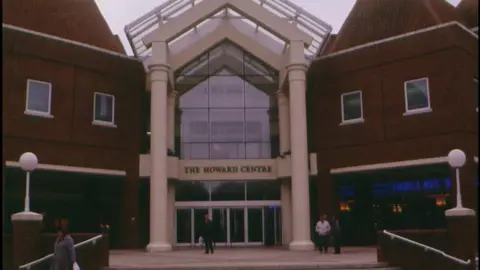Welwyn Garden City celebrates centenary in 2020
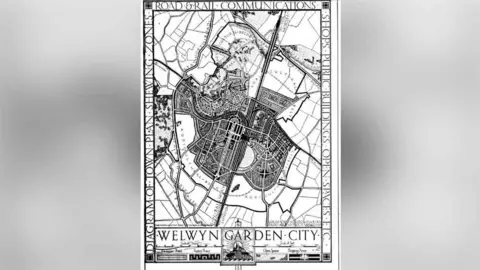 Getty Images
Getty ImagesPreparations are under way for the UK's second garden city to celebrate its centenary in 2020.
In 1919, Sir Ebenezer Howard, the garden city movement's founder, bought land for a second town following his first project, Letchworth Garden City.
The town was born in April 1920, when the company Second Garden City Limited became Welwyn Garden City Limited.
Council leader Tony Kingsbury said it was time to "reflect on our unique past and look forward to a bright future".
He added: "Our communities are immensely proud of their town and it is wonderful to see this pride bringing people together for fantastic year of celebration ahead."
The town was the home of Shredded Wheat and the first hospital built by the National Health Service, but also gained royal approval.
Queen Elizabeth, the Queen Mother, grew up nearby. Whenever she visited the town she asked her driver go over the White Bridge to take in what she considered "the finest urban landscape in the world", according to Tony Skottowe, director of the Welwyn Garden City Heritage Trust.
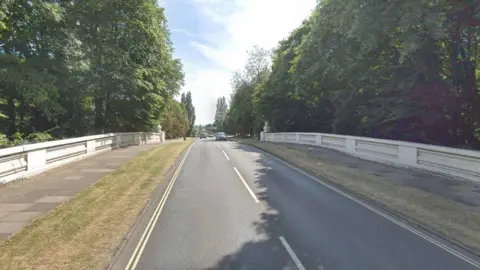 Google
GoogleShredded Wheat, the smell of which pervaded the town until production ceased in 2008, was the "major employer" in the town's early days, having opened its factory in 1926.
"It was a real coup to have a company of that size building its own factory there, as it was a huge confidence boost to anyone else," Mr Skottowe said.
The site is now being developed into The Wheat Quarter, earmarked for 1,500 new homes and other buildings.
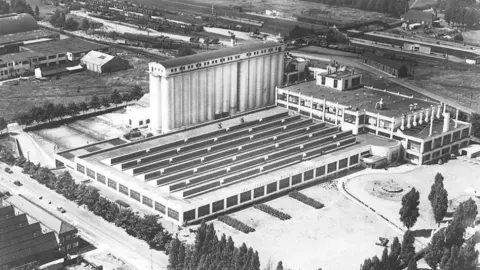 Welwyn Hatfield Museum Service
Welwyn Hatfield Museum ServiceThe QEII, the first hospital built by the NHS was officially opened by the Queen in 1963.
The original closed in 2014, with key services relocated to Stevenage's Lister Hospital, but a new QEII on the same site offers some services.
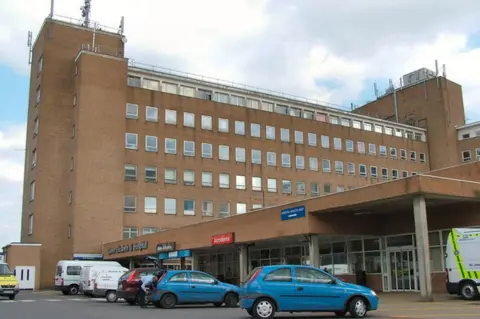 Geograph/Melvyn Cousins
Geograph/Melvyn Cousins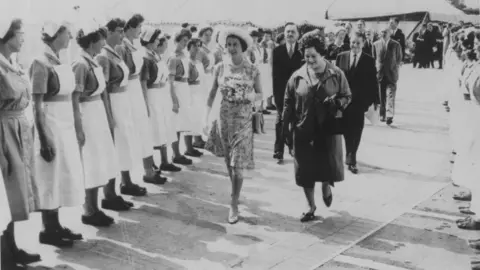 Welwyn Hatfield Borough Council
Welwyn Hatfield Borough CouncilThe garden city concept spread across the world and is still a subject of discussion.
Howard set out his belief that good-quality housing was essential to a good quality of life in his 1898 book A Peaceful Path to Real Reform or Garden Cities of Tomorrow, the movement's manifesto.
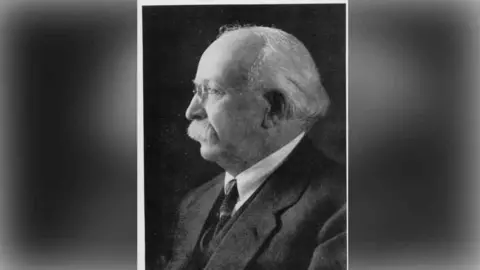 Welwyn Hatfield Borough Council
Welwyn Hatfield Borough CouncilThe industrial revolution had led to a growth in manufacturing, also brought smoke-belching factories, a huge rise in urban populations, slums and poverty.
Howard wanted properly planned towns, combining the advantages of both cities and the countryside, while avoiding the disadvantages.
They should be of a fixed size, own their own land and have a green belt of land around them.
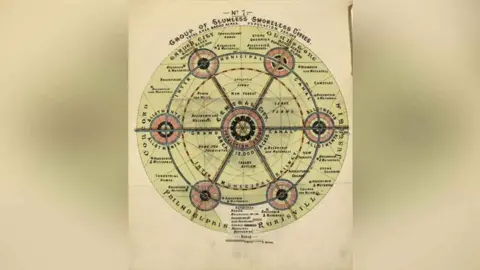 Out of copyright
Out of copyrightLocal historian Angela Eserin said Howard wanted this to be a movement and feared that Letchworth Garden City would just be a one-off experiment.
With no sign of government intervention, despite the post-World War One housing shortage, he decided to press on himself.
In 1919, he bought 590 hectares (1,458 acres) of countryside near Welwyn village for £51,000 at auction, raising the deposit from friends and supporters.
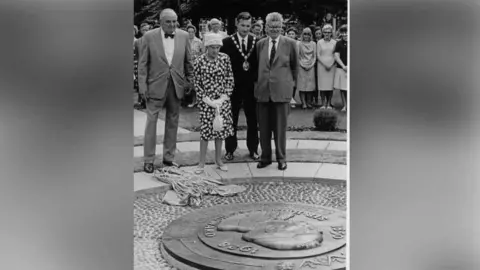 Welwyn Hatfield Borough Council
Welwyn Hatfield Borough CouncilLetchworth architect Courtenay Crickmer designed the first houses but eventually Louis de Soissons, now considered as important as Howard in the town's development. was recruited,
His master plan, characterised by neo-Georgian buildings, elegant boulevards and open spaces, was produced in six weeks.
Ms Eserin said it "perfectly interprets Howard's garden city idea".
She said: "It was built around the railway with a strong town centre and intimate housing areas in closes.
"He played with landscaping, perfectly marrying countryside and town... with existing trees and hedges retained."
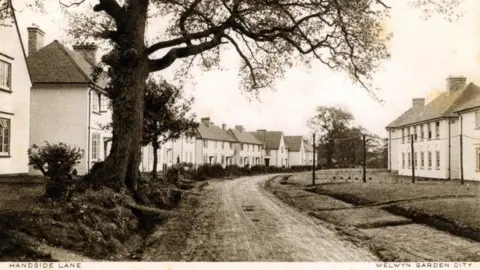 Welwyn Hatfield Museum Service
Welwyn Hatfield Museum Service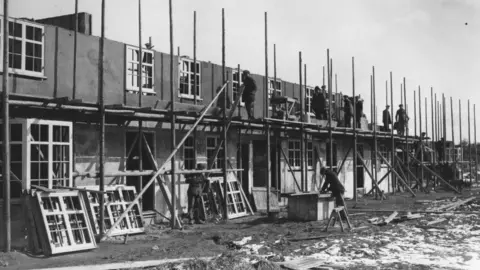 Getty Images
Getty ImagesWelwyn Garden City was designated a new town in 1948 and was paid £2.8m for its assets.
The Welwyn Garden City Development Corporation took over, with de Soissons remaining as architect so the housing style and landscaping principles stayed the same.
In 1966, its assets were devolved to the New Towns Committee.
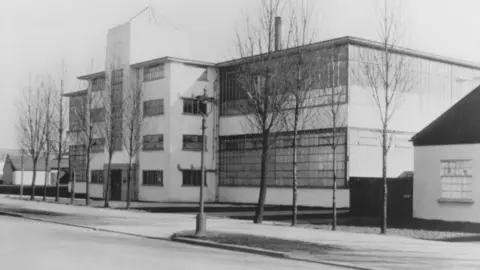 Welwyn Hatfield Borough Council
Welwyn Hatfield Borough Council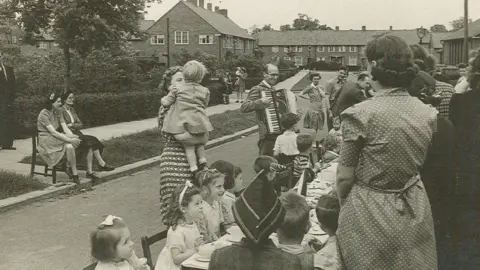 Welwyn Hatfield Museum Service
Welwyn Hatfield Museum ServiceMs Eserin said: "The town doesn't ever stand still; it's not a museum piece.
"It's got to change and adapt and that's the challenge for now and for the next 100 years."
The Welwyn Garden City Centenary Foundation has organised a number of events for 2020, including an event to light up features in the town, a 20km (12.5-mile) centenary walk and a huge summer carnival.
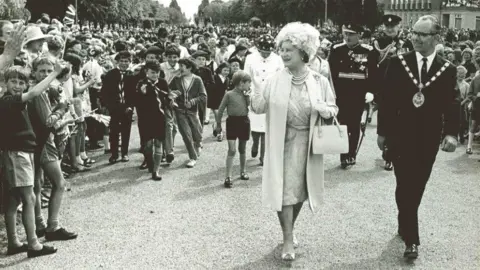 Welwyn Hatfield Museum Service
Welwyn Hatfield Museum Service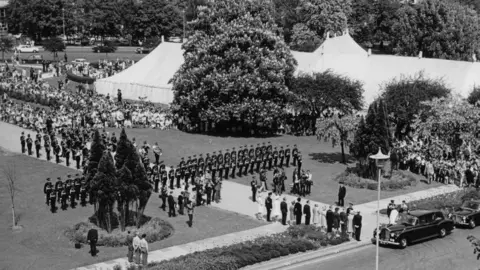 Welwyn Hatfield Borough Council
Welwyn Hatfield Borough Council